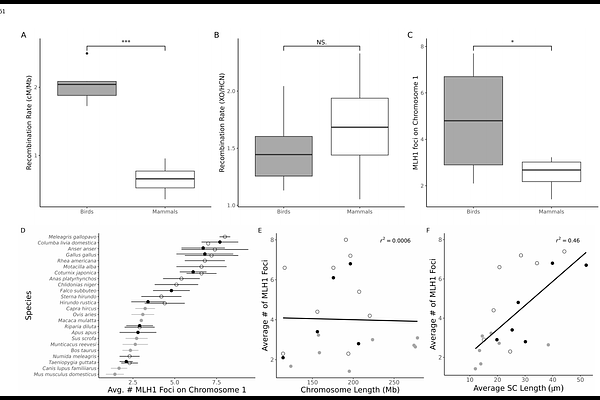Evolution of the meiotic recombination pathway in vertebrates

Evolution of the meiotic recombination pathway in vertebrates
Szasz-Green, T.; Shores, K.; Vanga, V.; Zacharias, L.; Lawton, A.; Dapper, A.
AbstractMeiotic recombination is an integral cellular process, required for the production of viable gametes, and the rate at which it occurs is a fundamental genomic parameter, modulating how the genome responds to selection. Our increasingly detailed understanding of its molecular underpinnings raises the prospect that we can gain insight into trait divergence by examining the molecular evolution of recombination genes from a pathway perspective, as in mammals, where protein-coding changes in the later stages of the recombination pathway are connected to divergence in intra-clade recombination rate. Here, we leveraged increasing availability of avian and teleost genomes to reconstruct the evolution of the recombination pathway across two additional vertebrate clades: birds, which have higher and more variable rates of recombination and similar divergence times to mammals; and teleost fish, which have much deeper divergence times. We found that the rates of molecular evolution of recombination genes are highly correlated between vertebrate clades, suggesting that they experience similar selective pressures. However, recombination genes in birds were significantly more likely to exhibit signatures of positive selection, unrestricted to later stages of the pathway. There is a significant correlation between genes linked to recombination rate variation in mammalian populations and those with signatures of positive selection across the avian phylogeny, suggesting a link between selection and recombination rate. In contrast, the teleost fish recombination pathway is more highly conserved with significantly less evidence of positive selection. This is surprising given the high variability of recombination rates in this clade.